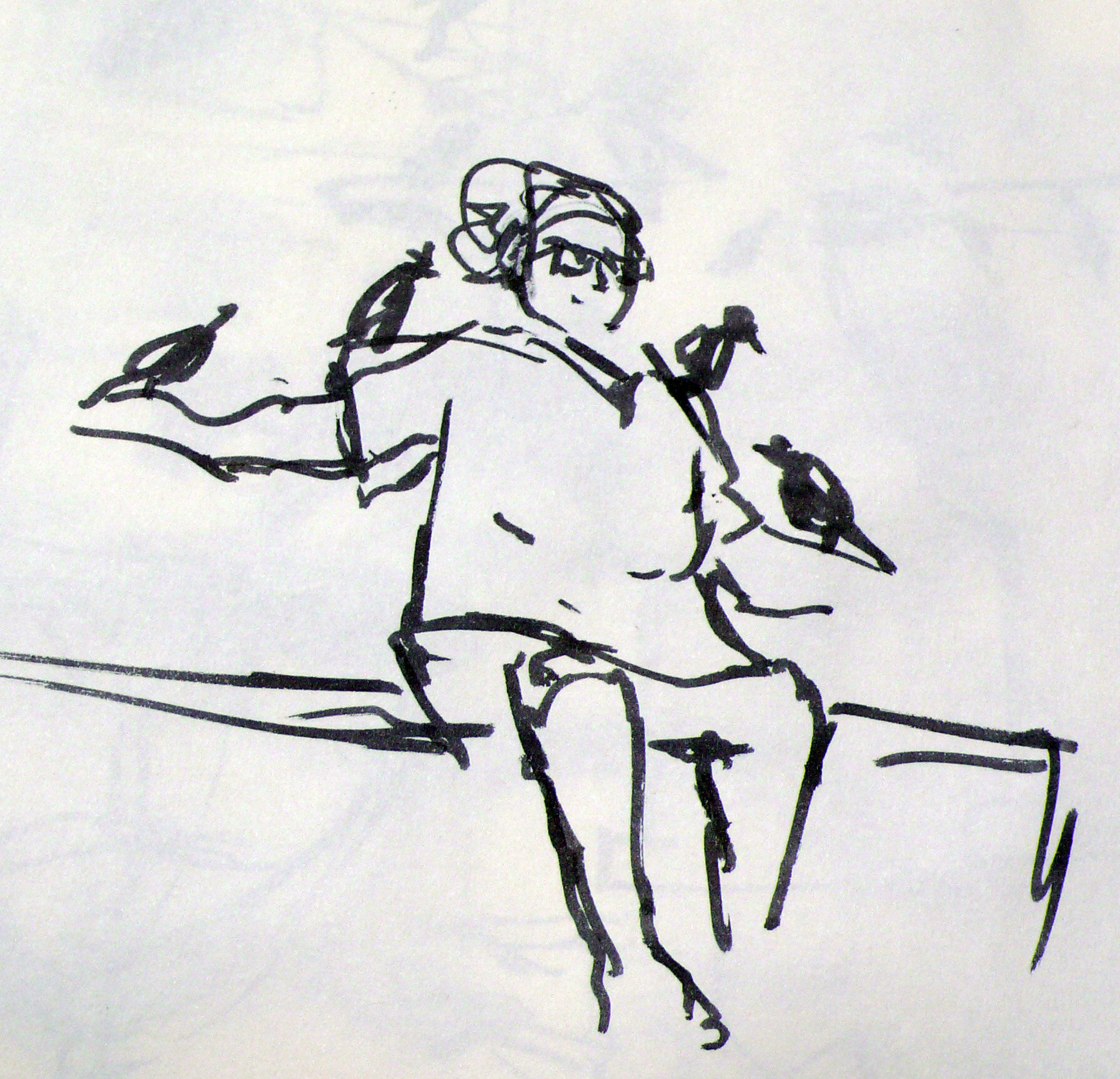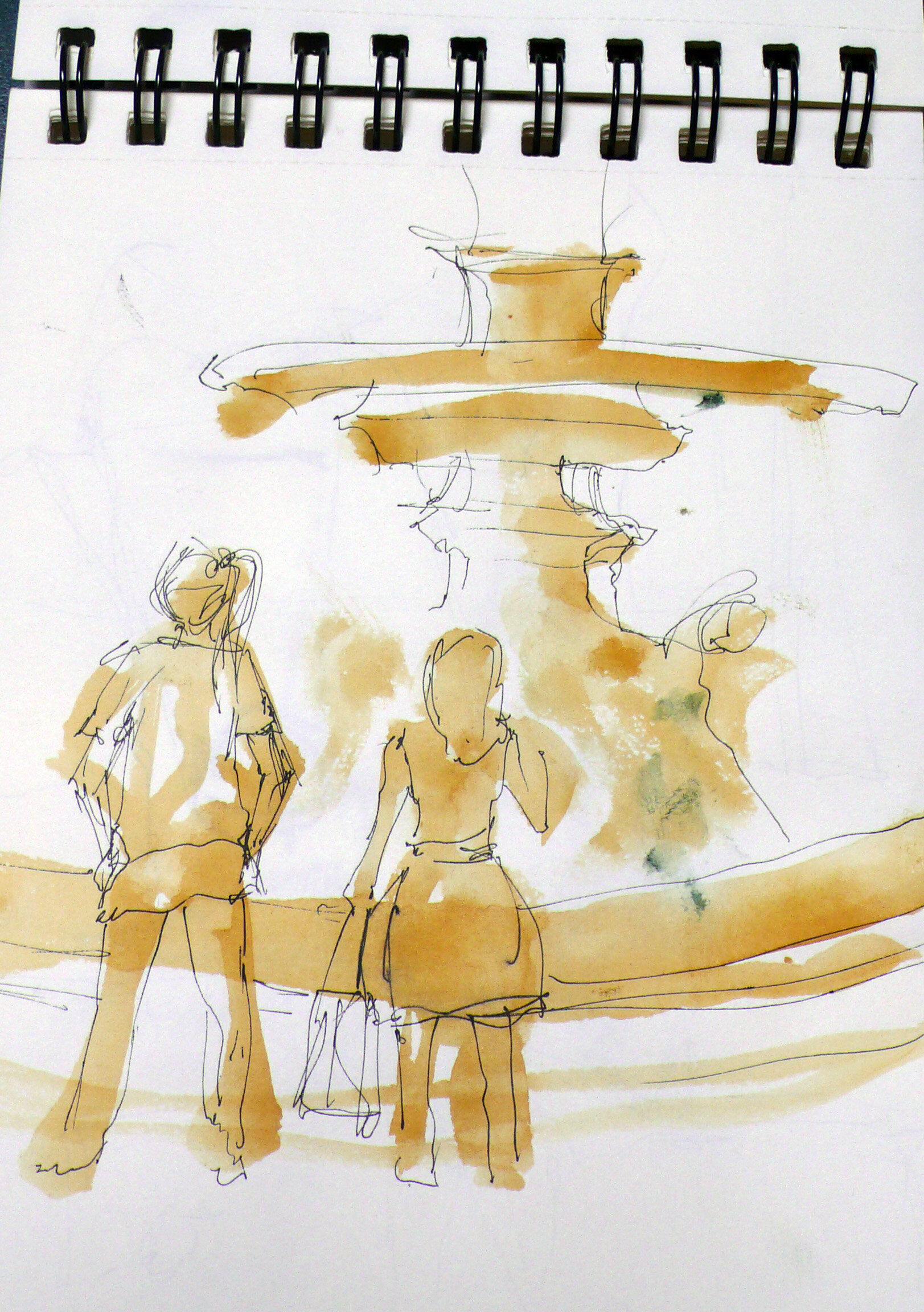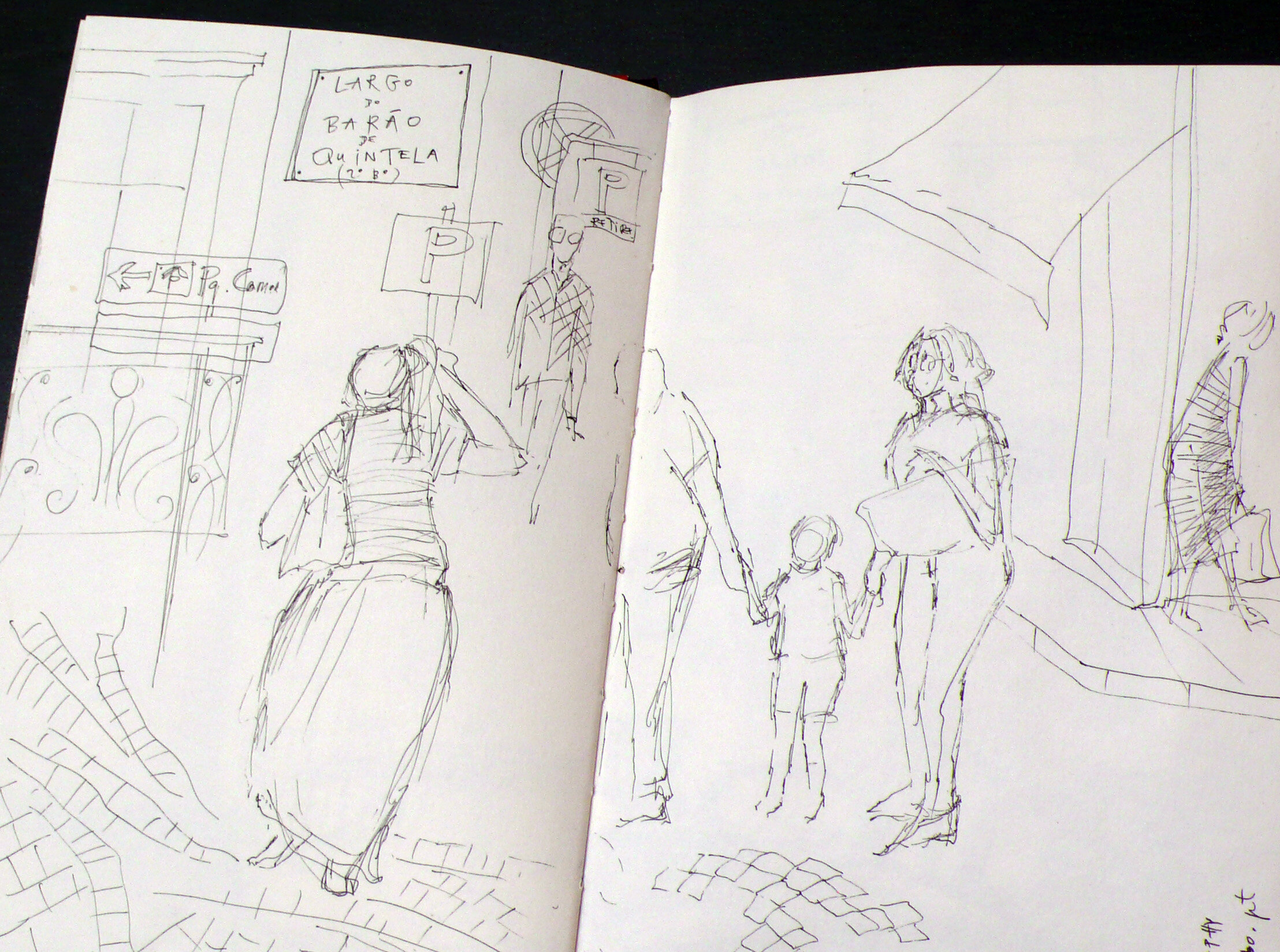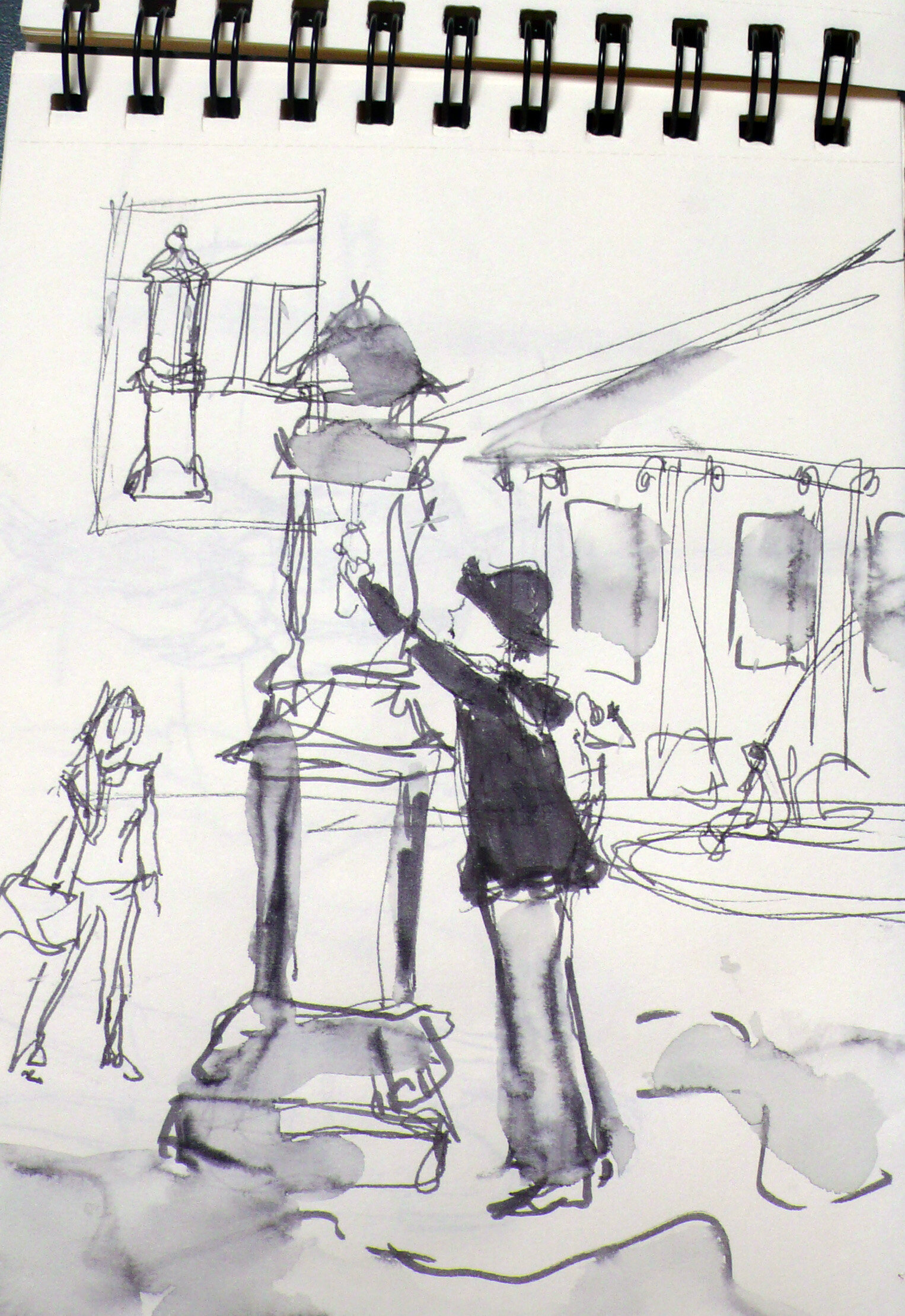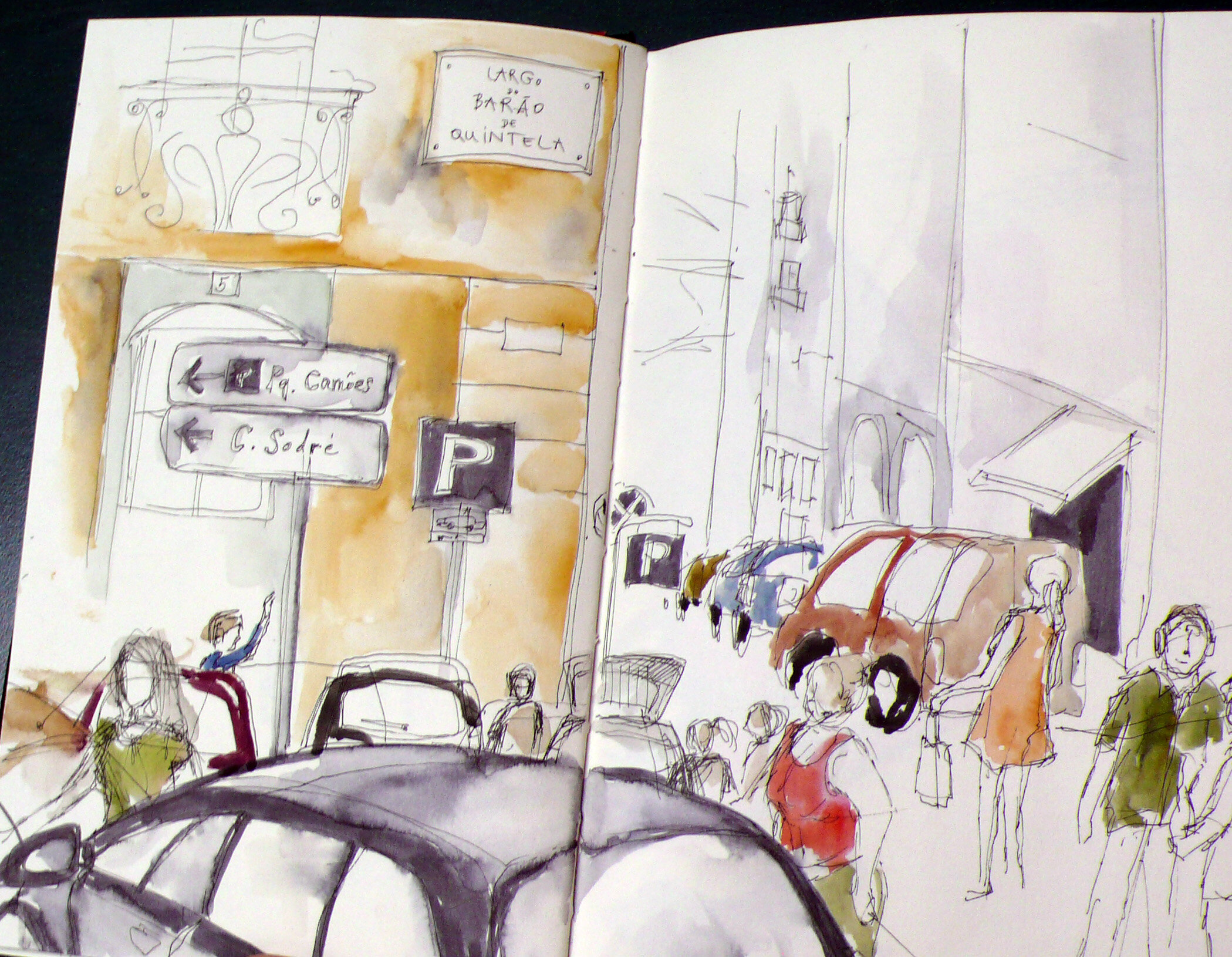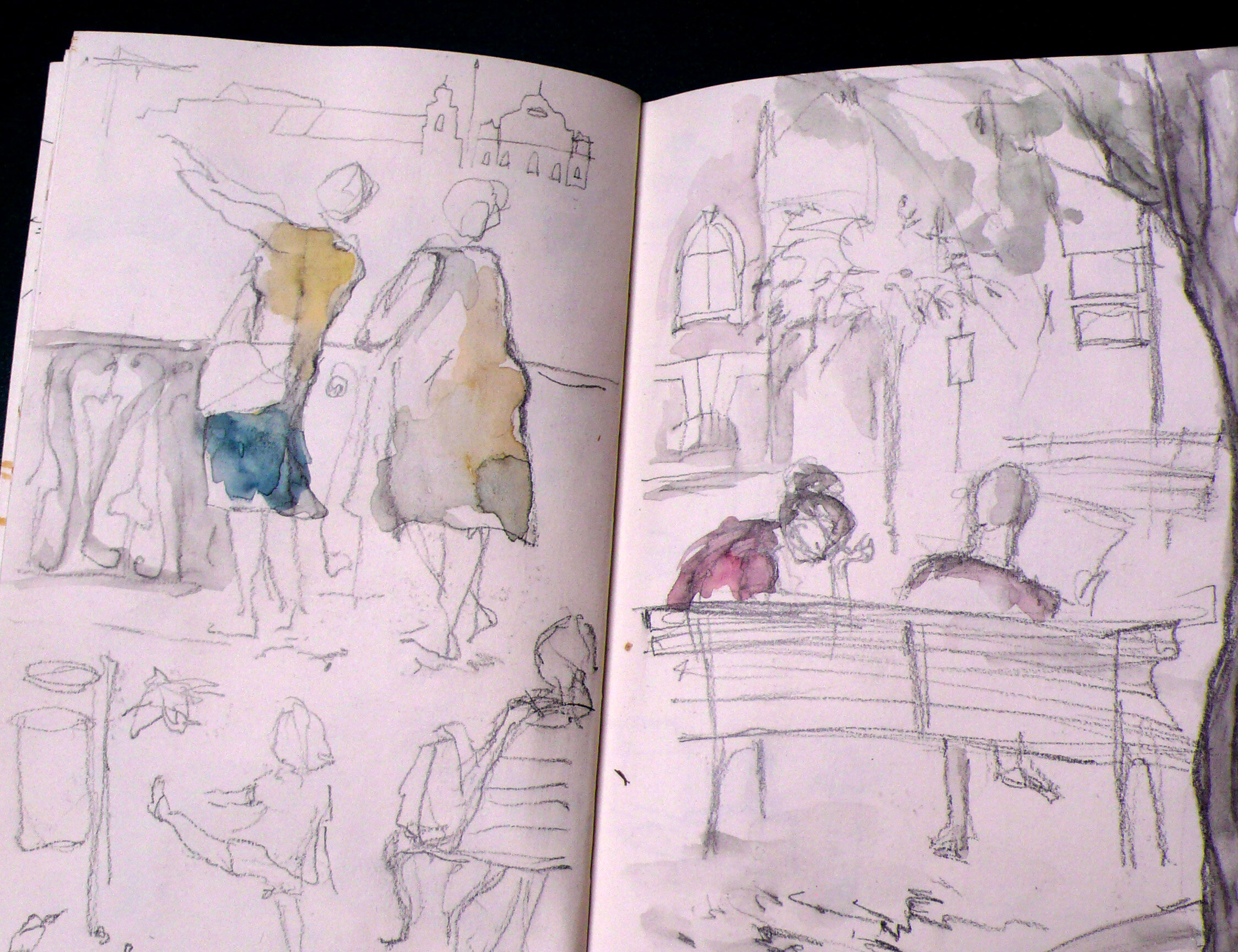The Walkit Story - Part 1
(This is the 1st part of a series of four blogposts, telling the story of how Walkit sketching bags were born. The 2nd part can be read here.)
It will soon be two years since I designed the Walkit sketching bags and the Walkit brand came to life.
It was quite a journey, one that started all the way back in 2011. Maybe even before that, when I didn't even know what sketching was, or even if I did, I didn’t call it so. On the occasion of this second birthday, I’ve been reflecting on the milestones along the road, partly because every journey deserves memories, and partly because it has been a path full of learning (even if sometimes I wished it wasn’t).
In 2011, I was a young mother of a young child and an illustrator-to-be. It was a new life stage, full of questions and self-doubt. I was searching for a new me within the territories of motherhood and art, and the reconciliation of the two. It was this year that I got to know the community of Urban Sketchers, at the 2nd Urban Sketching Symposium in Lisbon. But let me start from the beginning.
/Lisbon Subway Azulejos/
I grew up in a family of five children, with a father passionate for travelling and a mother willing to take on whatever adventures he came up with. We would sometimes spend months on the road in our VW minibus, with 7 suitcases on the roof rack. (To tell you about these trips would take a different blogpost, or rather a picture book - another time).
I always kept a journal on these trips, and I found myself wondering if there were more artistic and personal forms to document my travels, other than with photographs and words. I tried a few times, but my attempts have disappointed me each time.
I had no blueprint to follow, the Internet wasn’t such an infinite alternate of the real world yet (I wish it still wasn’t), so I just kept trying on my own. I sometimes stumbled upon small treasures, one being the stunningly beautiful and absolutely unique illustrated Magic Moments in Florence by Adriana Silvestri (Mandragora, 1999). It was exactly what I had imagined, the only problem being that my drawing skills were nowhere near her’s.
/The magnificent pages of Silvestri’s book captivated me/
Many years later in 2011, I was still searching (ok, I did some other things, too, like graduating, marrying, giving birth, etc.) and, out of the blue, I found the group Urban Sketchers (the virtual world grew up to the challenge in the meanwhile, too). I realized they are having their 2nd International Symposium in Lisbon that year and knew I had to be there. It was the first time I spent more than a day apart from my 3-year-old son.
How do you recognise an urban sketcher?
S/he is sitting/standing on a random street corner (foot of a building, a bridge, a coffee table etc.) with a sketchbook on her/his lap, and - while constantly glancing up and down - is drawing. But what (is s/he drawing)? - you may ask. Whatever s/he sees. Whatever is going on with/around her/him. The cup s/he has just been served her latte in. The friends s/he is just talking to. The Pride procession marching down the street. The old man sitting on a bench feeding pigeons. The Parliament. Rooftops. More daring sketchers sketch people sitting across from them on the subway, their kid throwing a tantrum in the middle of the street, or the doctor examining their strained ankle (a consequence of walking and sketching simultaneously).
According to their Manifesto, Urban Sketchers “See the world, one drawing at a time”.
/Urban (rural) sketching with my 5 yrs old nephew last summer at Tisza Lake, Hungary/
The movement, which counts more than 100,000 members around the world by now, was initiated by a Seattle artist, Gabi Campanario, establishing a Flickr group with a few of his friends, sharing sketches of their everydays. It has proven to be contagious. Today local groups all around the world - in Budapest, too - follow in their footsteps.
The 2011 Lisbon symposium was still a small one with “only” about 200 sketchers gathered from around the world (compared to nearly 1000 at more recent ones). Almost everyone I know from this community I know from the Lisbon symposium. Every morning and afternoon we did a workshop, exploring the city of Azulejos in groups of 20, learning and practising the genre of sketching. By the end of the 4th day I could break down the crowd to faces and names (and most fascinatingly: styles of sketching!).
/Marina and I in Lisbon, 2011./
This is how I got to know Marina from Israel who had 4 almost grown up children and the face and soul of a 25 years old. Her 20 second sketches of people were just brilliant. There was Marcia in her straw hat, the jolliest hippie from the US I want to become when I get retired. Liz, an architect from Australia who has the energy of a storm (a very loving one), fills several sketchbooks every month, and in Lisbon she simply wrapped me into her arms exclaiming: “So how is your dearest Mother?”. We clarified the misunderstanding quickly with a good laugh, but the momentum has kept us connected ever since. Eduardo from Brazil told me that his grandparents were Hungarian and he was happy to meet someone from the country he hasn’t yet seen. And finally Paul from Singapore, who turns any dusty and grey building into a fairytale on his aquarelles, and Mario and Ketta from Lisbon, who are now sketching together with their 6-year-old boy, Matias. And many others.
/With Eduardo. How young we were!!! Lisbon, 2011 /
/Workshop of Joao and Pedro at the Urban Sketching Symposium in Lisbon, 2011/
My sketches from Lisbon, if I am looking at them purely from an artist’s point of view, are plainly horrible. But I’m very proud of their horribleness. I feel a kind of gentleness towards them. They are the true memories of my beginner self, of the clumsy search for lines and perspective. In their imperfections they are an honest mirror of who I was at the time.
Isabel Fideiro, an anthropologist living in Africa, and the leader of one of the last workshops, when witnessing my struggles told me about the importance of keeping one’s first sketchbook. Nothing will show you the distance travelled better than those first sketches. So I did keep it. And I am sharing with you a few of them here, please be gentle with them.
Lisbon left a deep impact on me. It was lovely to re-read my blog journal written at the time. I couldn’t know that many years would pass before I would meet my sketcher friends again.
In the same year I started working on my first proper commission, the illustration of the children’s novel Maléna kertje (by Krisztina Rita Molnár, published by Naphegy, 2013). It is a beautiful text and became a much loved book in Hungary, having been reprinted five times since. In 2015 the author started to work on the next part of the book (Kréta-rajz), the story of which plays on the island of Crete. We had a sudden idea to spend a week there and walk the route of the novel together, while collecting words (her) and images (me) for the story.
And so we did - adventures again worth a blogpost or two -, walking Crete for a week, both of our shoes falling apart by the end. (You may want to ask, what kind of shoes does a writer and an illustrator take for trekking? Well, don’t ask.)
But what does this have to do with the Walkit sketching bags?
They say every idea needs a strong enough frustration to be born. Well, this trip to Crete was my fertilizing frustration from which the idea of the sketching bags was born.
How the idea was born and what happened after is the subject of the next blogpost, I hope you will follow me!







